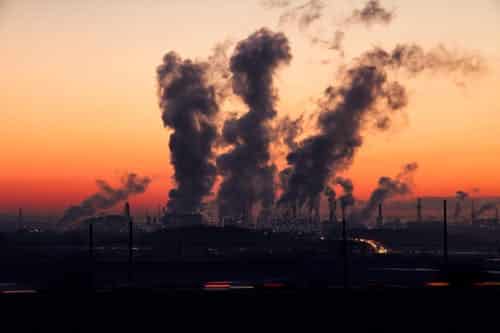U.S. Releases Landmark Blueprint for Cleaner Industrial Sector

The U.S. Energy Department and the White House Office of Science and Technology Policy on Nov. 18 released a national blueprint for creating a cleaner and more competitive industrial sector. The department developed the blueprint in collaboration with several federal agencies to highlight how the government can enable the private sector to reduce emissions, improve supply chain resilience and foster industrial innovation.
The U.S. manufacturing sector is part of the backbone of the U.S. economy, accounting for 12 percent of the country’s annual gross domestic product. However, due to the carbon-intensive nature of many industrial processes, the manufacturing sector is responsible for around 20 percent of annual greenhouse gas emissions. The blueprint lays out a multi-dimensional approach to reducing industrial emissions and supporting research, development, and commercialization of technology.
The U.S. has an ambitious target to reduce emissions by around 50 percent from 2005 levels by 2030. Industrial emissions are difficult to reduce because of the complexity of processes and diversity of emissions processes. The department has found that the industrial sector can reduce 58 percent of its carbon emissions by 2030 using technology that is already available.
One of the key sources of industrial carbon dioxide is heat, which is used for materials processing, chemical separation, and steam generation. In 2020, industrial heating contributed around 30 percent of the sector’s energy-related carbon emissions.
The report states that the manufacturing sector can reduce heat-related emissions through electrification and replacing boilers with heat pumps and thermal batteries. Emerging technologies such as heat recovery enhanced geothermal, concentrated solar thermal, advanced nuclear, and thermal storage also have great potential to reduce heat-based emissions. Last month, the department announced $43 million to support the development of transformational technologies that will lower energy use and emissions across industrial subsectors.
The blueprint outlines “levers” or tools the government can use to accelerate industrial decarbonization, particularly supply-side investments and demand pulls. Some of the government’s key supply-side actions are tax incentives, grants, and loans for demonstration and deployment. For example, earlier this year, the department announced $4 billion in Advanced Energy Tax Credits, with $500 million reserved for industrial decarbonization. Companies can use these manufacturing tax credits to carry out retrofitting for electrification and switching to renewable fuel sources.
Additionally, in March 2024, the department announced its largest investment in industrial decarbonization with $6 billion in funding for 33 projects. The funding was possible through the 2021 Infrastructure Investment and Jobs Act and the 2022 Inflation Reduction Act, both of which have provisions to tackle decarbonization in carbon-intensive sectors like manufacturing. Selected projects covered areas such as reducing carbon dioxide in cement processing, using hydrogen facilities to reduce carbon emissions in steel manufacturing, and energy optimization for paper and aluminum.
EnerKnol Pulses like this one are powered by the EnerKnol Platform—the first comprehensive database for real-time energy policy tracking. Sign up for a free trial below for access to key regulatory data and deep industry insights across the energy spectrum.
ACCESS FREE TRIAL


